Immigration Granulation tattoos and jewels migration journeys back onto the bodies that made them. The permanent and temporary adornments create a single composition, casting food each wearer would have eaten on their path – alluding to the physical repair and nourishment the body needs for such journeys.
These works were made in collaboration with Stanislava Pinchuk.
Commissioned by the Immigration Museum of Australia, 2019.
Photography by Gavin Green.
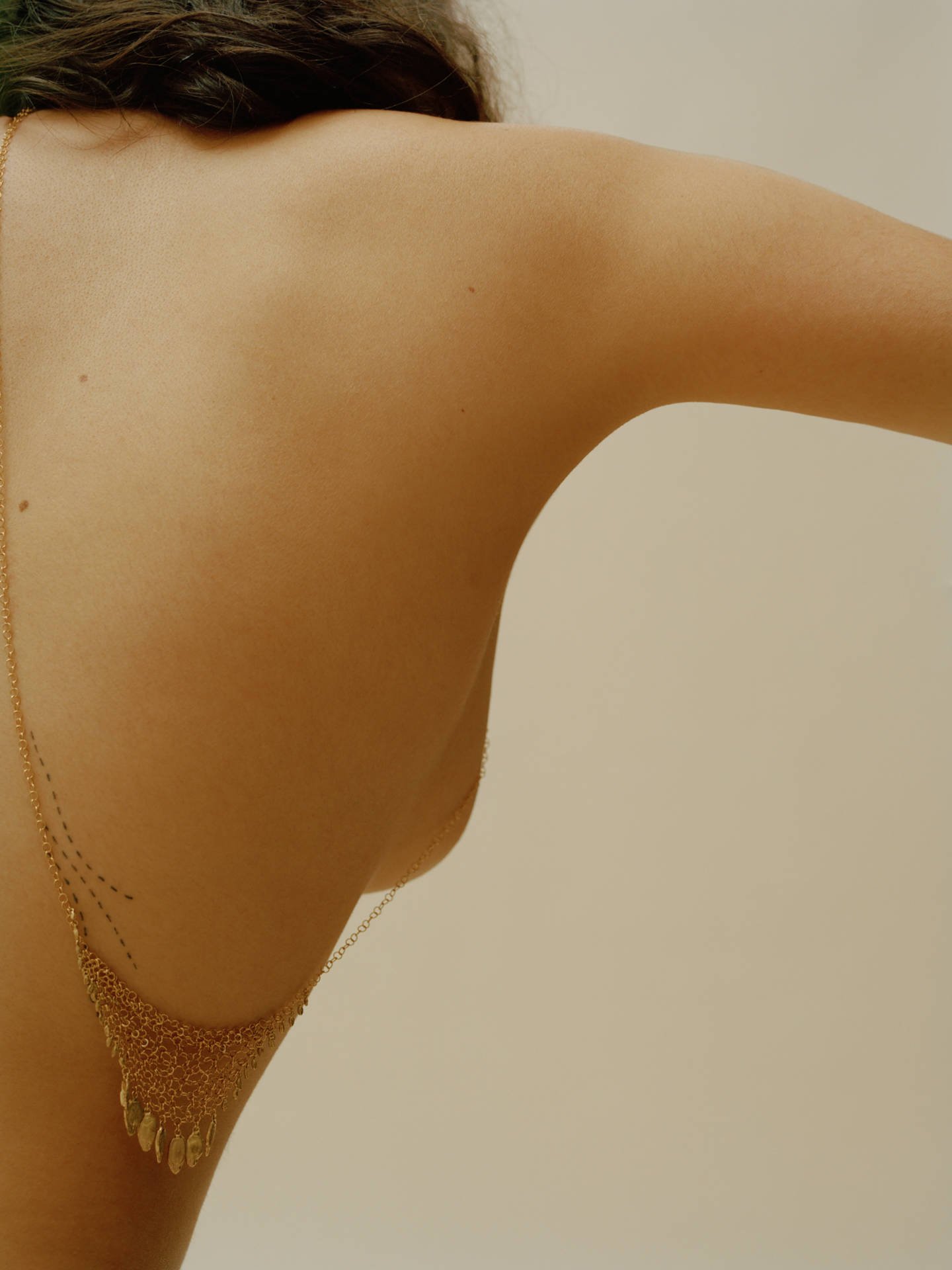
‘N.S. ( Watermelon Seed, Aniseed )’, photographic print on cotton rag. Edition of 5 + 3 AP, 90 x 120cm, 2019.
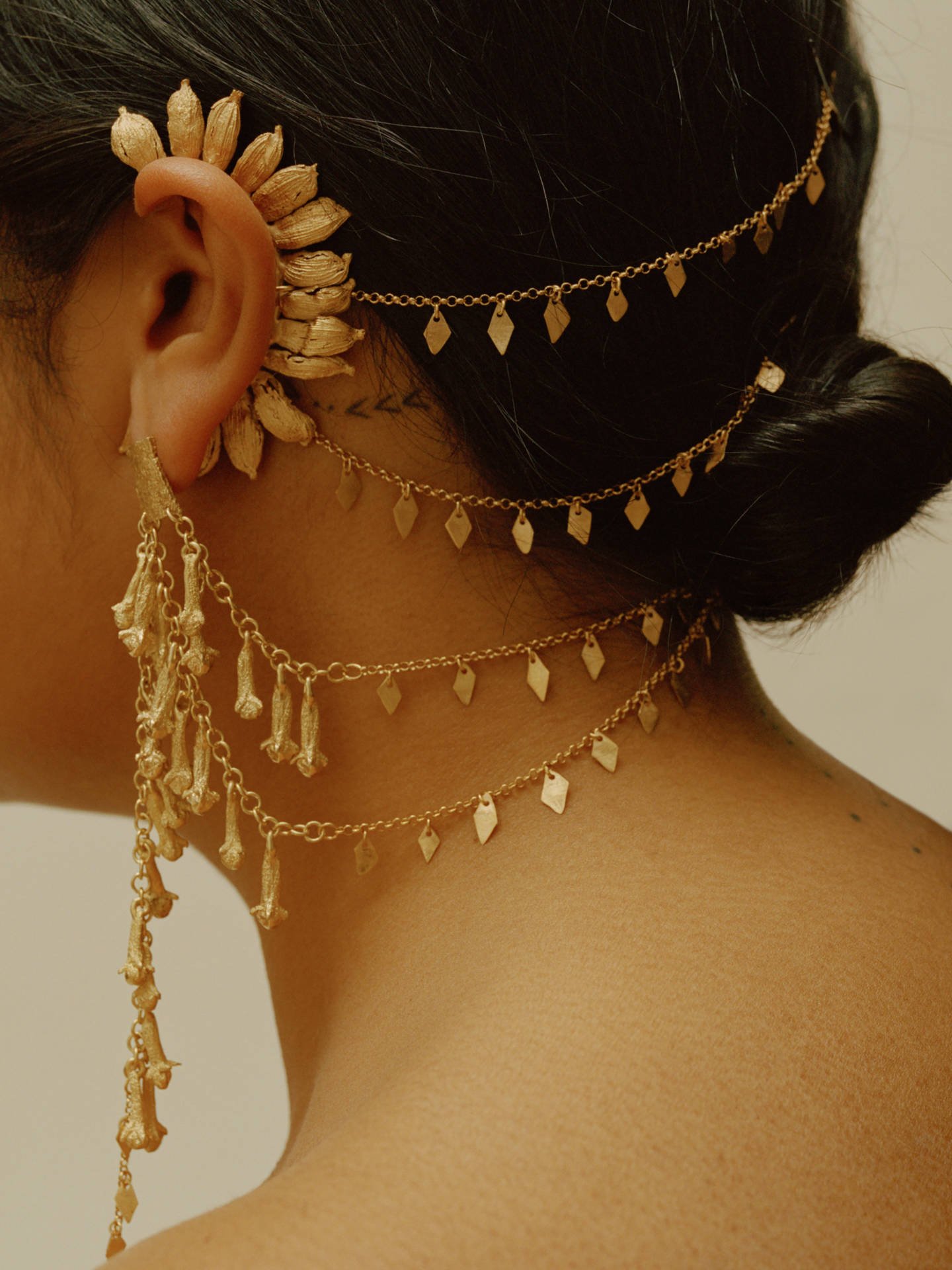
‘Z.K. ( Cardamom, Clove, Cinnamon Bark )’, photographic print on cotton rag. Edition of 5 + 3 AP, 90 x 120cm, 2019.
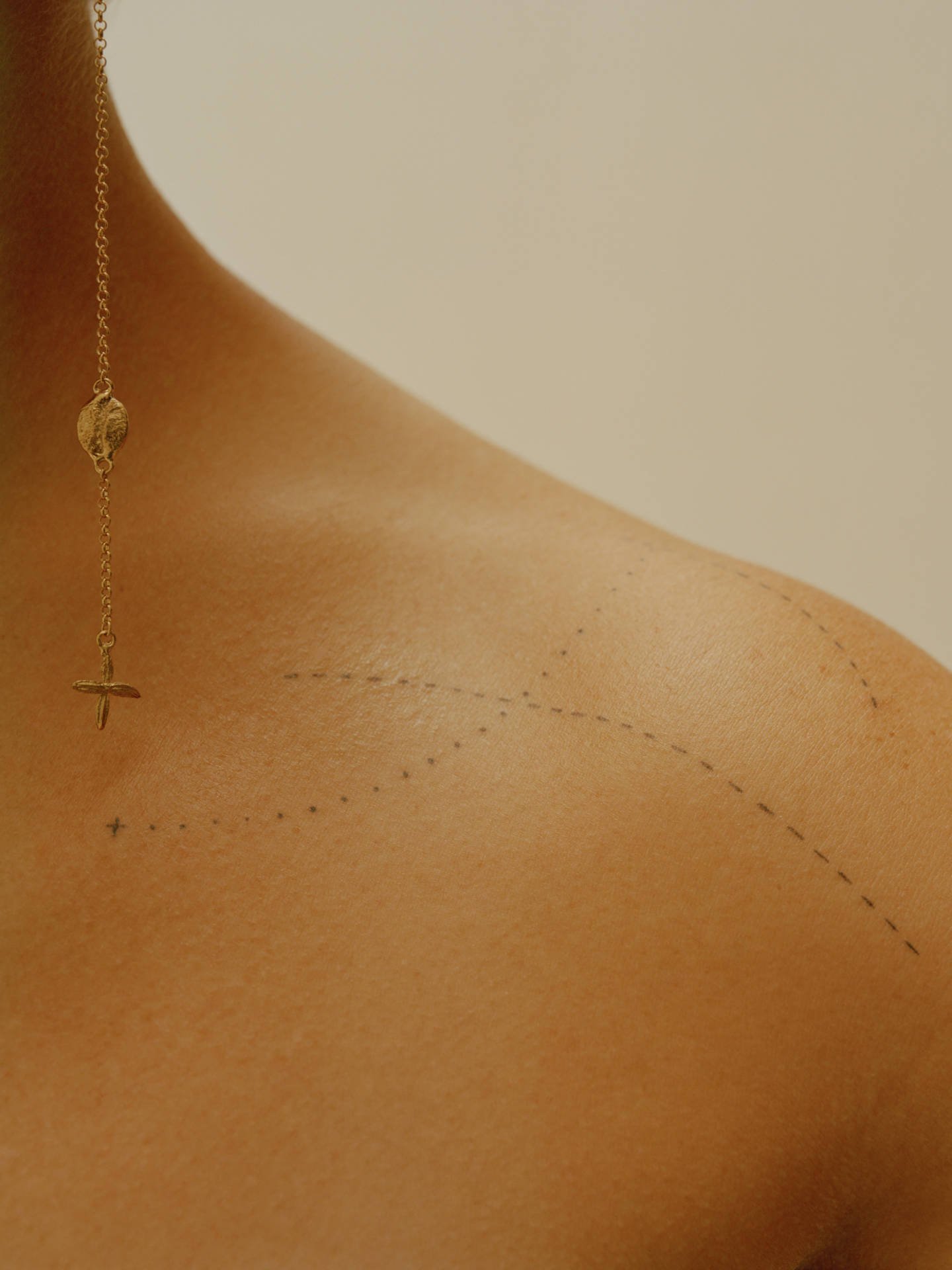
‘K.S. ( Fennel, Coffee )’, photographic print on cotton rag. Edition of 5 + 3 AP, 90 x 120cm, 2019.
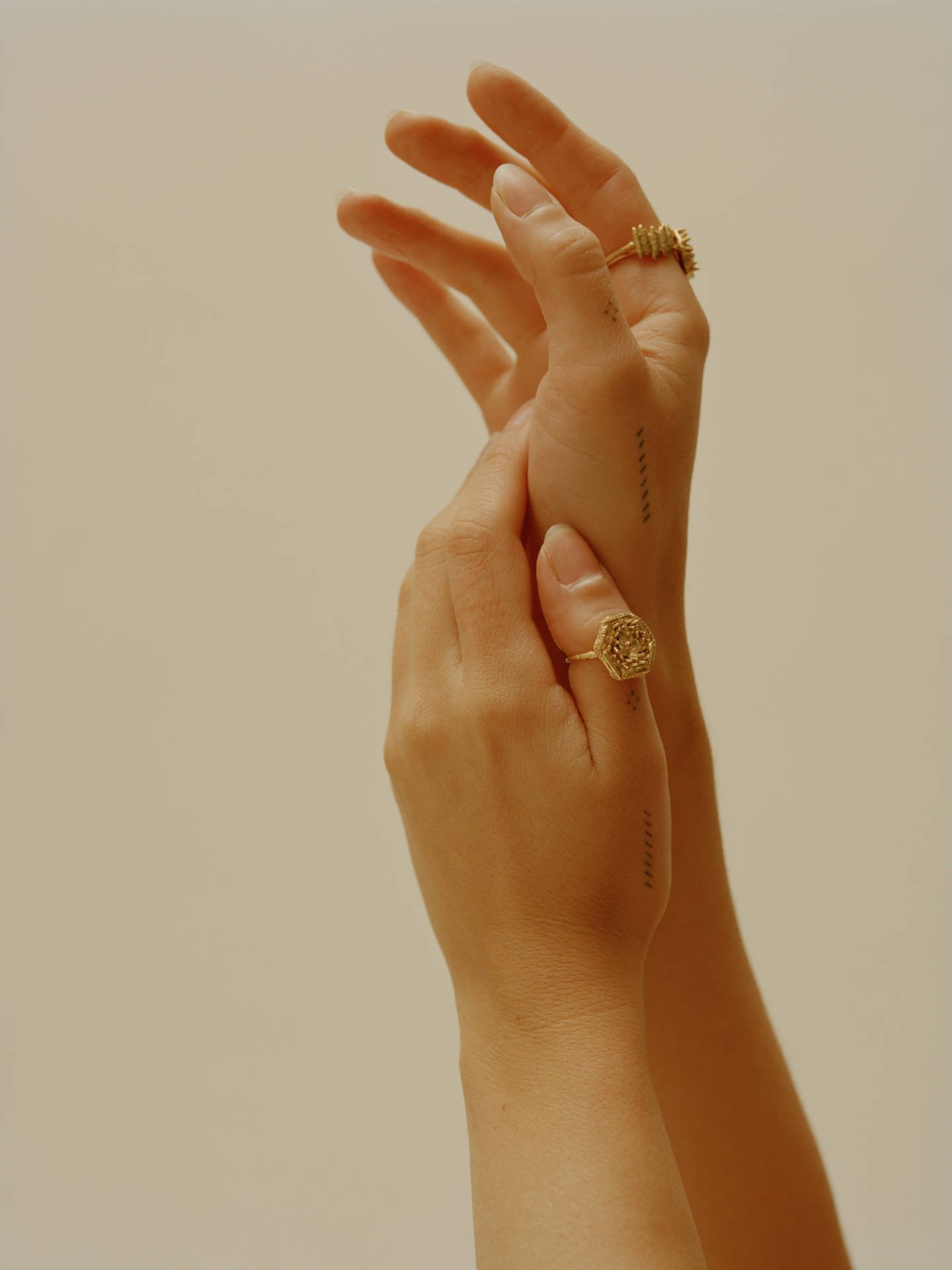
‘J.N. ( Sesame, Rice, Mustard )’, photographic print on cotton rag. Edition of 5 + 3 AP, 90 x 120cm, 2019.
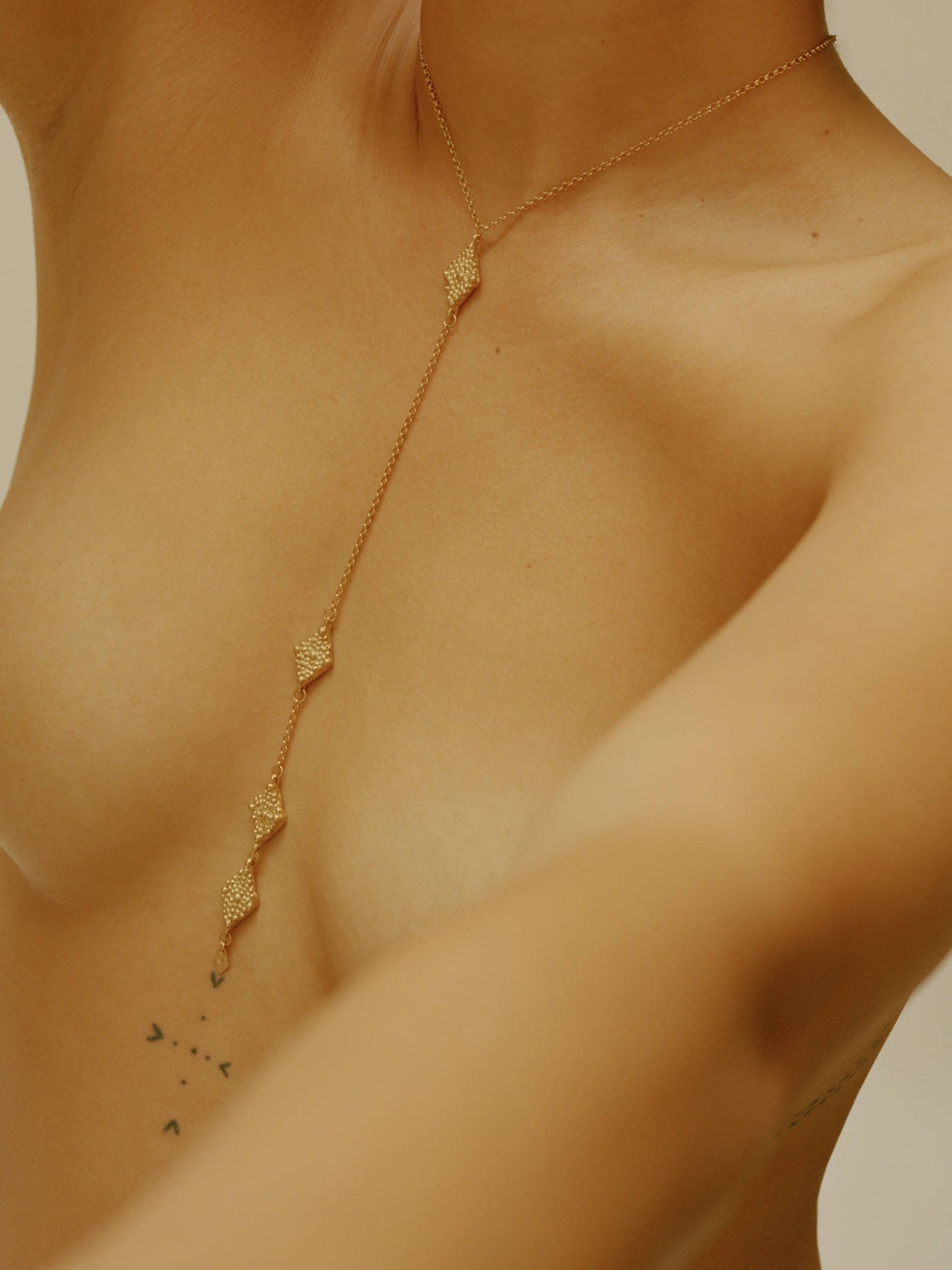
‘C.L. ( Mustard )’, photographic print on cotton rag. Edition of 5 + 3 AP, 90 x 120cm, 2019.
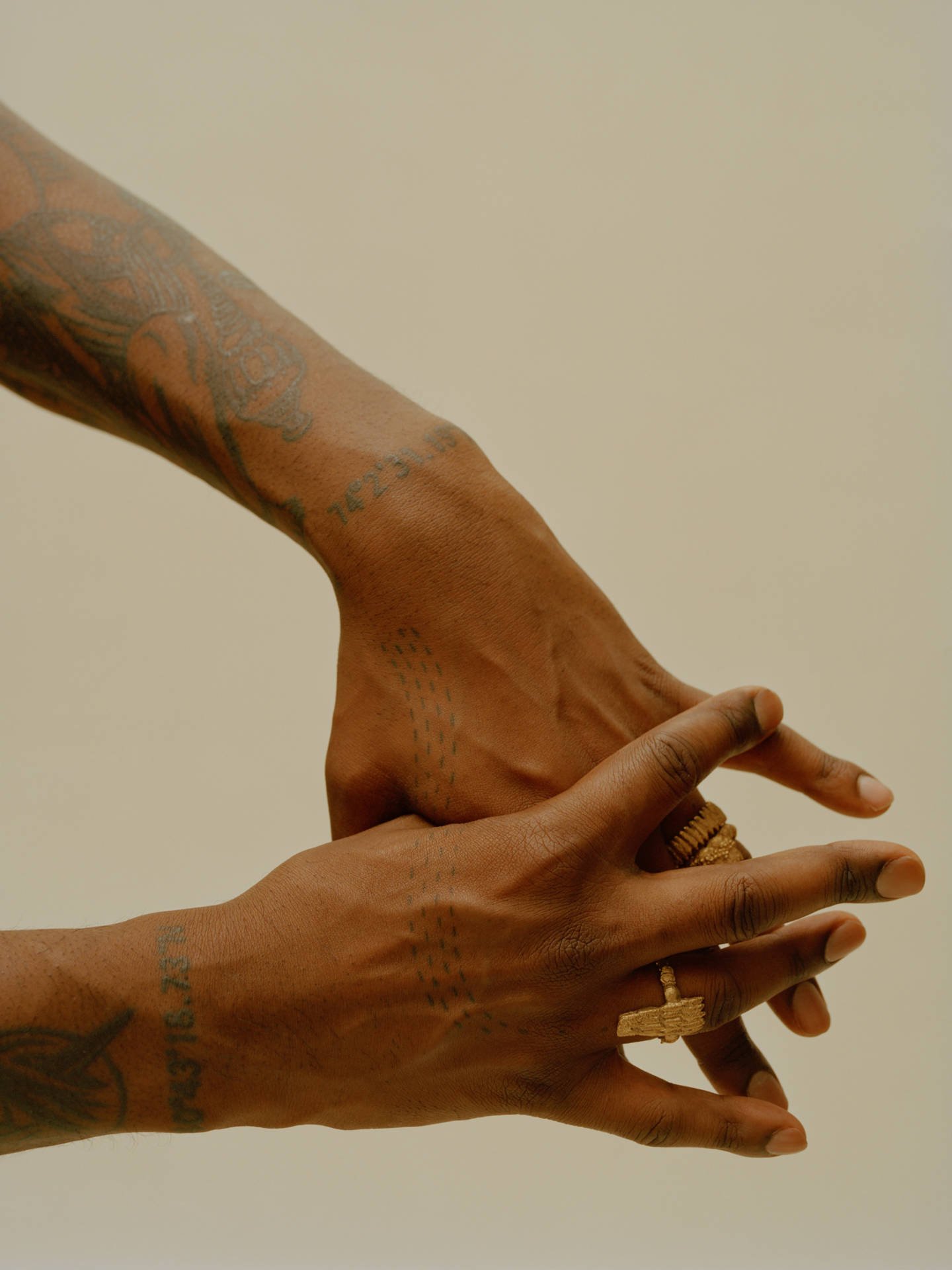
‘M.D. ( Rice, Dahl, Chilli )’, photographic print on cotton rag. Edition of 5 + 3 AP, 90 x 120cm, 2019.
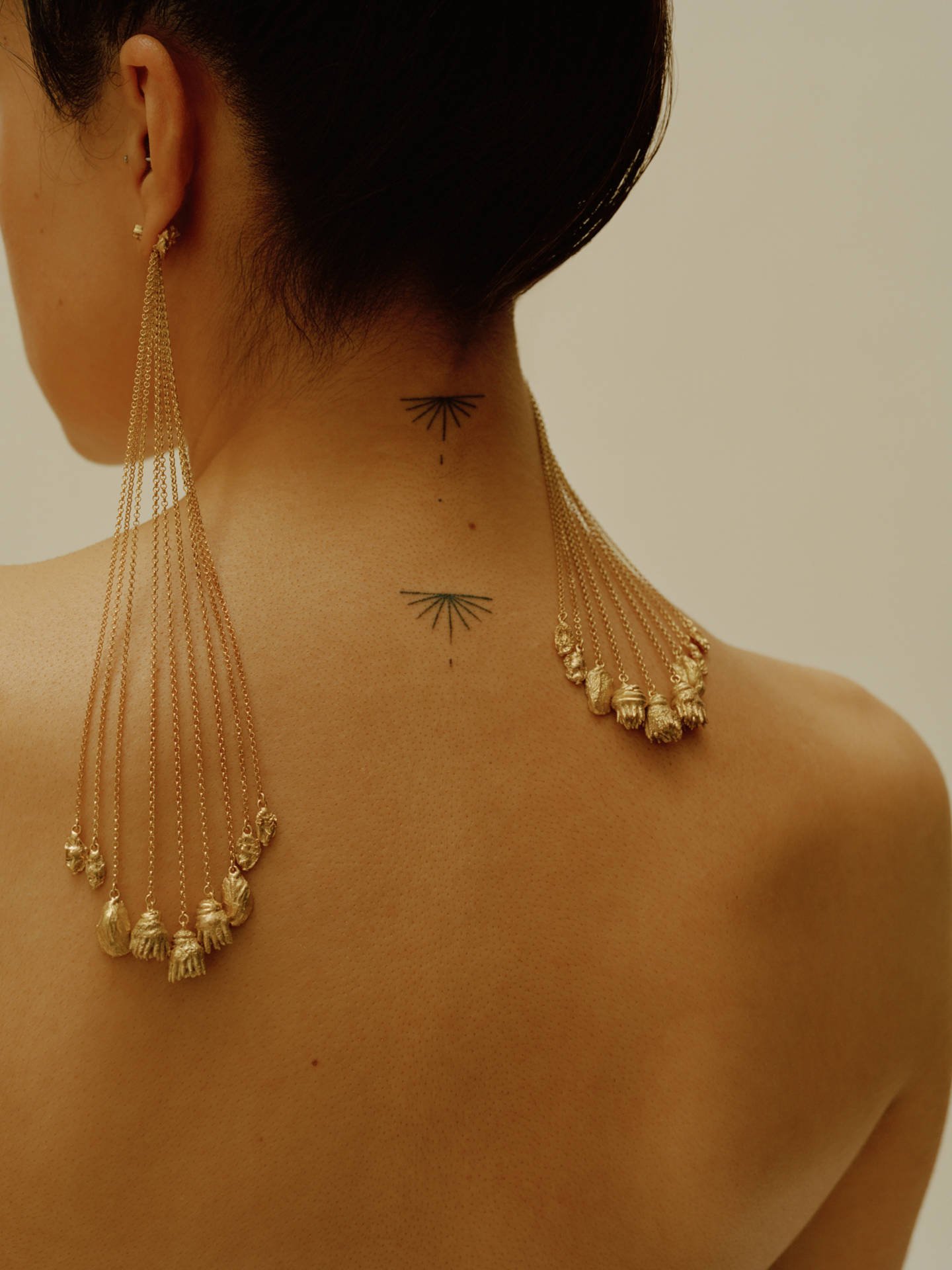
‘N.M. ( Rice, Pistachio, Barberry )’, photographic print on cotton rag. Edition of 5 + 3 AP, 90 x 120cm, 2019.
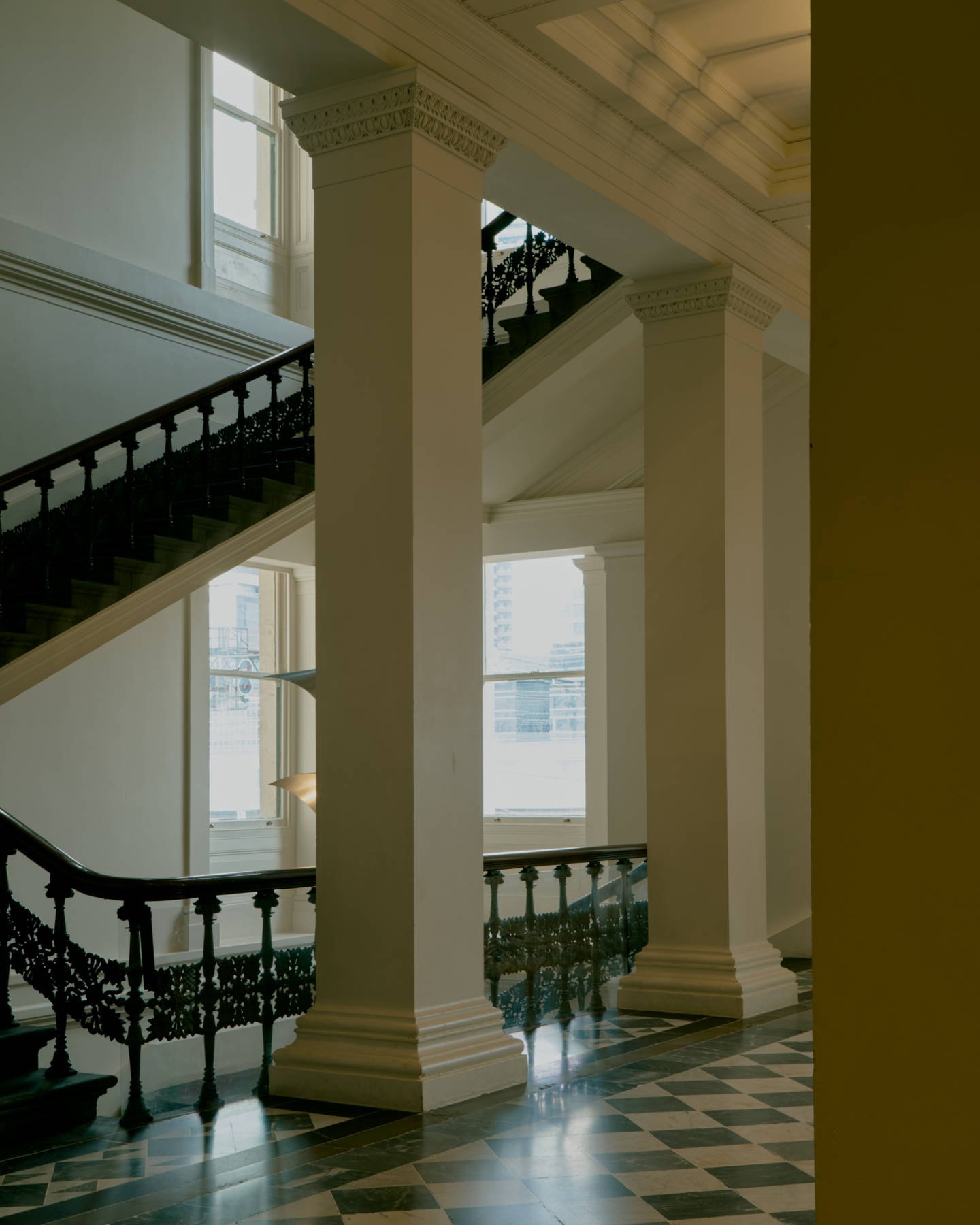
Installation view, Immigration Museum of Australia. May 2019 – April 2020. Photograph: Gavin Green.
When skin is tattooed, it undergoes the medical process of granulation to heal itself. Capillary vessels form into small beads, as new connective tissue forms over the wound. Curiously, jewellers use the same granulation process in creating ornament. Gold is heated into a capillary reaction, and the resulting beads are fused into decorative patterns and arrangements over a metal surface. And of course, farmers have always used the granulation process in the preparation of staple foods. The following works consider the intersection of all three processes.
In all, the pieces allude to the physical repair and nourishment the body needs from immigration journeys; as well as to toll they take. But also, they ask; is the tattoo the irreversible mark, while jewellery can be taken off? Or is a tattoo a temporary mark to inevitably perish, while jewellery outlives us to be passed on to the next generation? And hence, are migrations just temporary journeys or more permanent echoes in the world?